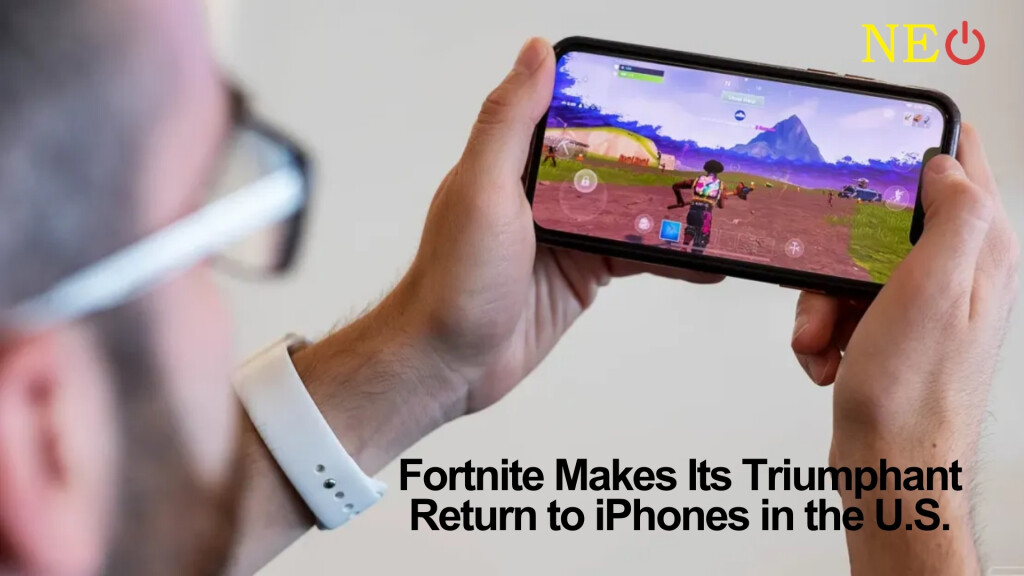Is ChatGPT Working On a Chat Shopping Feature Integration?
Discover how ChatGPT’s upcoming shopping feature will transform e-commerce with AI-driven product searches and seamless checkouts.

For years, Fortnite fans in the United States have been stuck on the sidelines when it comes to playing the wildly popular battle royale game on their iPhones. But after a lengthy legal battle, policy shifts, and anticipation from the gaming community, Fortnite is finally making its long-awaited comeback to iOS devices in the U.S.
Table of contents [Show]
To understand why this return is such a big deal, it's important to revisit what led to Fortnite’s removal from the App Store in the first place. Back in August 2020, Epic Games—the developer behind Fortnite—introduced a direct payment option within the iOS version of the game. This move bypassed Apple’s 30% commission fee on in-app purchases, violating the App Store’s policies.
Apple quickly responded by removing Fortnite from the App Store. Epic retaliated with a lawsuit, accusing Apple of monopolistic practices. What followed was a highly publicized legal showdown that drew global attention and sparked conversations about digital marketplaces, developer rights, and consumer choice.
The court battle between Epic Games and Apple was long and complicated, with mixed outcomes. While the judge ruled that Apple must allow developers to direct users to alternate payment systems, they also sided with Apple in many areas, including the company’s right to remove Fortnite from the App Store.
However, global regulatory pressure—particularly from the European Union—has been reshaping how digital platforms operate. The EU’s Digital Markets Act (DMA), which promotes fair competition and greater consumer choice, forced Apple to change some of its long-standing policies, such as allowing third-party app stores and alternate payment systems.
Although the DMA is European legislation, its ripple effects have reached U.S. shores. Apple is slowly opening the gates for apps that don’t fully adhere to its ecosystem, and Epic has seized the opportunity to bring Fortnite back to iPhones.
Unlike its original availability through the App Store, Fortnite will now be accessible on iPhones in the U.S. through cloud gaming services and alternative platforms. Specifically, Epic Games has been collaborating with services like NVIDIA GeForce NOW and Microsoft’s Xbox Cloud Gaming, which allow players to stream games directly from the cloud to their devices—bypassing traditional app stores entirely.
This method not only complies with Apple’s current rules but also offers Epic a way to maintain control over their payment systems and user experience. It’s a workaround, yes, but one that works well enough to deliver a seamless gaming experience for iOS users.
For many players, this return marks a revival of convenience and mobility. Fortnite is a fast-paced game that thrives on accessibility, and being able to play it on-the-go again is a win for its massive U.S. fan base. iPhones are still among the most popular smartphones in the country, and having Fortnite back—albeit via cloud gaming—is a welcome development.
There’s also excitement around cross-platform play. With the game available on iPhones again, players can join their friends across devices, whether they’re gaming on a PC, console, Android device, or now, once again, an iPhone.
The return of Fortnite on iPhones represents more than just a single game's comeback—it signals potential changes in how the mobile gaming industry operates. Developers now have more alternatives to the App Store’s strict ecosystem, and consumers may benefit from lower costs and increased innovation.
It also shows that big developers like Epic Games are willing to challenge the status quo to deliver their products directly to users. This could set a precedent for other companies looking to reclaim control over their mobile offerings.
While this version of Fortnite isn’t technically reinstated on the App Store, it’s still available on iPhones in a practical, legal, and fully functional way. Whether or not Apple will continue relaxing its grip on its ecosystem remains to be seen, but one thing is clear: developers and gamers alike are pushing for more freedom and flexibility.
As mobile technology advances and streaming becomes more integrated into daily life, we can expect to see more innovations that allow apps and games to operate beyond traditional distribution channels.
Final Thoughts
Fortnite’s return to iPhones in the U.S. is not just a comeback—it’s a statement. It underscores the evolving dynamics between tech giants and content creators, and it reflects the power of consumer demand in driving change. While the game may be accessed through a different route than before, the joy of dropping into Fortnite matches on an iPhone is back—and for millions of fans, that’s more than enough.
Discover how ChatGPT’s upcoming shopping feature will transform e-commerce with AI-driven product searches and seamless checkouts.
As the tech world anticipates Apple's next flagship release, the iPhone 17 Pro Max has become a focal point of numerous leaks and speculations. This article consolidates the most credible information available, offering insights into its expected price, launch date, design, color options, camera enhancements, specifications, and more.

